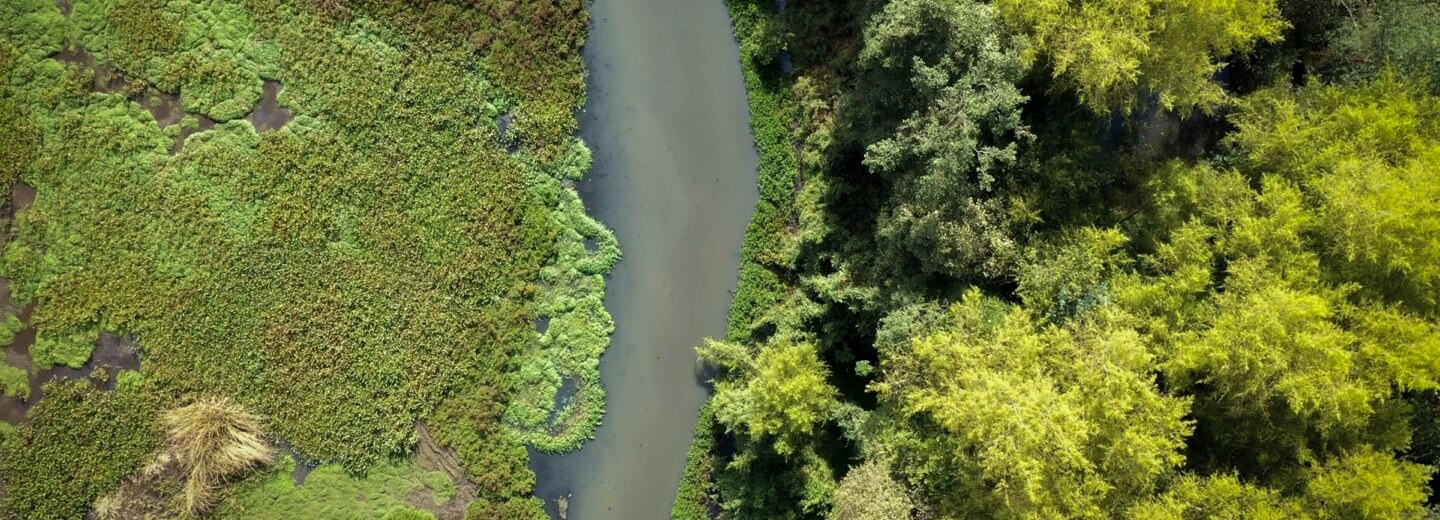
REGIONAL PRODUCER FOREST RESERVE OF THE NORTH OF BOGOTA "THOMAS VAN DER HAMMEN"
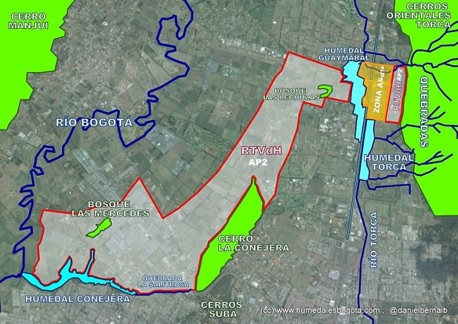 The Regional Producer Forest Reserve of the North of Bogotá “Thomas van der Hammen” (RFRPN), corresponds to the last representative sample of the original landscapes of Bogotá highlands (CAR, 2014). It also represents an alternative commitment to urban and regional planning that will serve as an adaptation or mitigation measure in the face of the serious impacts that climate change will have on Bogotá.
The Regional Producer Forest Reserve of the North of Bogotá “Thomas van der Hammen” (RFRPN), corresponds to the last representative sample of the original landscapes of Bogotá highlands (CAR, 2014). It also represents an alternative commitment to urban and regional planning that will serve as an adaptation or mitigation measure in the face of the serious impacts that climate change will have on Bogotá.
The Regional Producer Forest Reserve of the North of Bogotá “Thomas van der Hammen” (RFRPN), corresponds to the last representative sample of the original landscapes of Bogotá highlands (CAR, 2014). It also represents an alternative commitment to urban and regional planning that will serve as an adaptation or mitigation measure in the face of the serious impacts that climate change will have on Bogotá.
The RFRPN has many environmental values:
• It has several bodies of water (wetlands, ravines, part of the alluvial valley of the Bogotá river) and recharge areas, which fulfill important functions in the water regulation of the Bogotá savanna.
• It seeks to contribute to the consolidation of the Bogota’s Main Ecological Structure, since it makes possible for the Bogota’s Eastern Forest Protective Reserve and the Environmental Management and Preservation Zone of the Bogotá River and the Majui Hill in Cota to be interconnected and functioning as a whole as well as to the system of protected areas of district order (La Conejera Hill Ecological district Park and La Conejera, Guaymaral and Torca wetlands) (CAR, 2014).
• It has a specific area of Andean plain forest (remnant or relict) and wetlands.
• It is the habitat of more than 486 species, which, together with lichens, mosses, and liverworts, correspond to 514 species, most of them native (ACCEFYN, 2011). Additionally, 23 species of butterflies have been identified, of which two are new to science (ACCEFYN, 2011). Likewise, 3 species of amphibians, 8 reptile species and 2 native species of fish are reported.
• It is home of endemic and endangered species, typical of the highland wetlands including: Senecio carbonelli (Swamp daisy), Rallus semiplumbeus (Tingua from Bogota), Porphyriops melanops bogotensis (Tingua Pico Verde), Oxyura jamaicensis andina (Duck Blue Beak) and Cistothorus apolinari (Swamp Cockroach).
• It has the best agricultural soils in the upper Bogotá river basin, offering great possibilities for agricultural development.
• 100% of the Reserve area is cataloged by the Colombian Institute of Anthropology and History (ICAHN) as an area of potential archaeological wealth (Institute of Environmental Studies [IDEA], 2018).
• It allows other organisms to obtain shelter and protection, it contributes to soil maintenance, pollination, seed dispersal, greenhouse gas fixation, soil formation, water supply, nutrient cycling, aesthetic assessment and educational processes among many other things.
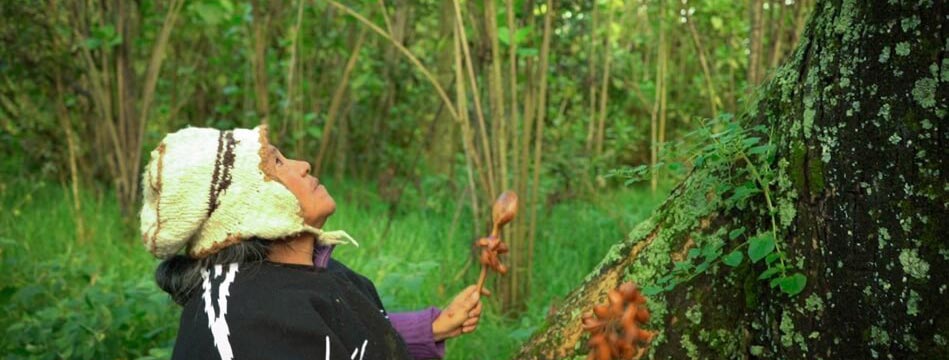 Muisca Grandmother “Blancanieves” Las Mercedes Forest. Photography by: Daniel Bretón
Muisca Grandmother “Blancanieves” Las Mercedes Forest. Photography by: Daniel Bretón
On the other hand, currently the Regional Autonomous Corporation of Cundinamarca (CAR) is evaluating the proposal of re-categorization, expansion of its areas and subtraction of the RFRPN that was presented in 2018 by the Mayor's Office of Bogotá.
In accordance with the above, on November 19 of 2019, the Corporations’s Board of Directors received from the Corporation, the technical concept of a request to subtract significant areas from the reserve (subtraction request) submitted by the Mayor's Office of Bogota. With this technical concept, the Corporations’s Board of Directors may decide in depth on the request for the said subtraction, thus complying with the court order that had imposed a peremptory term to issue the mentioned concept. (CAR, 2019).
In this concept, the team of professionals grouped for this purpose, presents the considerations, the environmental and technical valuations as well as the legal ones, regarding the withdrawal request of the Reserve for the expansion of three routes (Carrera 9, Avenida Boyacá and Avenida Suba - Cota). The technical concept concludes that it is not possible to recommend this subtraction process, since the elements for the study, brought by the District Administration are insufficient and incomplete; being necessary to complement and perfection several essential topics, including citizen participation (CAR, 2019).
On the other hand, the elected mayor of Bogotá signed an environmental commitment for Bogotá, before being elected, in which she undertakes to “withdraw or request to cease, if applicable, the requests for realignment and subtraction of the Thomas van der Hammen Reserve registered by the Mayor's Office before the CAR and to advance in the implementation of its environmental management plan (CAR Agreement 021 of 2014) in accordance with the goals and deadlines of its 23 projects. Prioritize the execution of the Suba - Cota road, in accordance with the Management Plan and adopt alternatives that improve physical and biotic connectivity on the roads that will be expanded, such as the Autopista Norte and the Carrera Séptima Avenue” (Environmental commitment by Bogotá, 2019).
Likewise, the elected Mayor's Government Program proposes “to move forward with the first stage of restoration of the Thomas van der Hammen Reserve” (López, C. & Program Team, 2019).
WETLAND LA CONEJERA
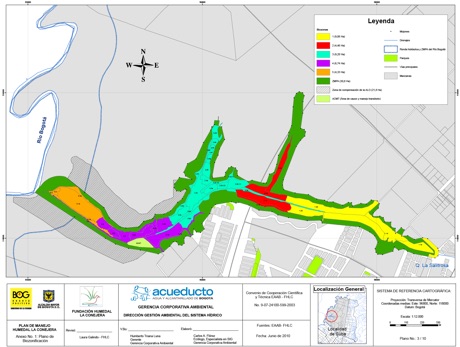 Bio-zonation Plan of the Wetland La Conejera (Bogotá Aqueduct Company & La Conejera Wetland Foundation)
Bio-zonation Plan of the Wetland La Conejera (Bogotá Aqueduct Company & La Conejera Wetland Foundation)
This wetland is located in the city of Bogotá D.C. and is under the category of Wetland District Ecological Park. It is part of the Capital District’s Protected Areas System and and Bogota’s Main Ecological Structure. (Decree 190 of 2004).
It was one of the few that survived the mass extinction of these ecosystems due to the intensification of economic activities and direct actions, such as deforestation, water pollution, desiccation, agricultural activities, disposal of solid waste in the channel, urbanization and wastewater discharge (Galindo, 2015).
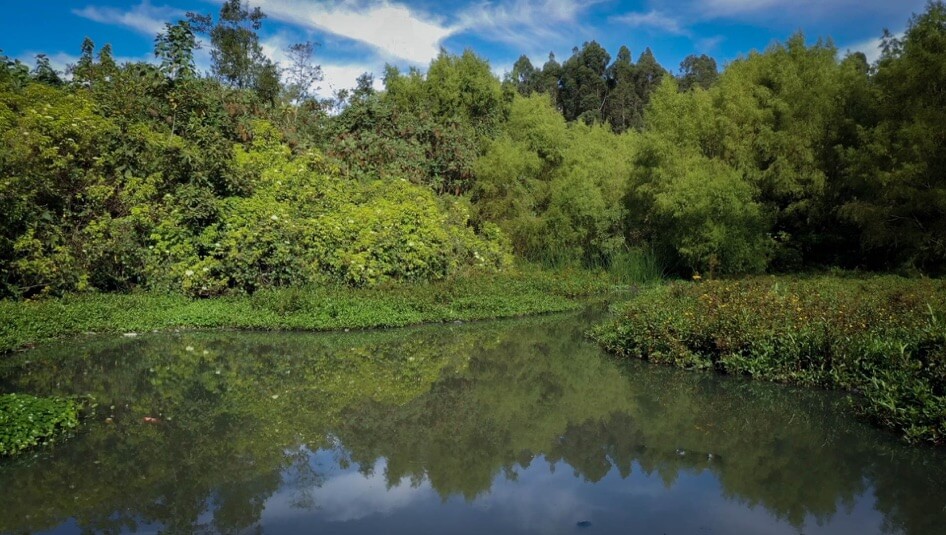 Wetland la Conejera. Photography by: Daniel Bretón
Wetland la Conejera. Photography by: Daniel Bretón
In order to compensate this problem and avoid the imminent loss of biodiversity associated with this ecosystem, in 1993 a process of citizen initiative aimed at the defense, ecological recovery, conservation and sustainable management of this wetland and the other ecosystems that make part of its micro-basin (La Salitrosa ravine, La Conejera hill, Las Mercedes forest and Bogotá river) (Galindo, 2015). This process was led by the La Conejera Wetland Foundation with the support of other entities and organizations of national and international order and was framed within the Environmental Management Plan formulated for this wetland (Galindo, 2015).
Thanks to this process, it was possible to stop the degradation of these ecosystems, caused by processes of housing construction and transformation of these into recreational parks. In the case of the wetland La Conejera, the actions implemented for its ecological recovery were fundamental for the restoration of some of its ecological functions, which allowed to redirect the ecosystem towards more desirable trajectories, favoring its conservation and the preservation of its associated biodiversity (Galindo, 2015).
Currently, the wetland is managed by the Bogotá Aqueduct Company and the District Department of Environment and has the Conejera Network, which is made up of neighbors of the wetland micro-basin. On the other hand, in the year 2019, in a ruling of the Administrative Court of Cundinamarca, the wetland La Conejera was recognized as a subject of rights.
Ecological importance and ecosystem services
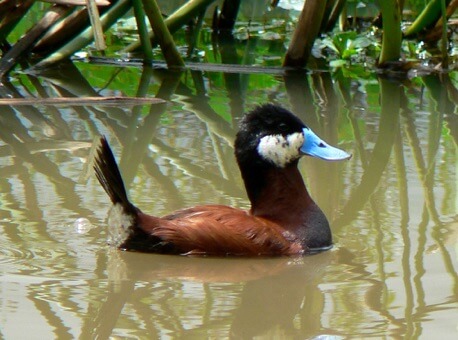 Oxyura jamaicensis andina – Duck Blue beak (Foundation La Conejera Wetland).
Oxyura jamaicensis andina – Duck Blue beak (Foundation La Conejera Wetland).
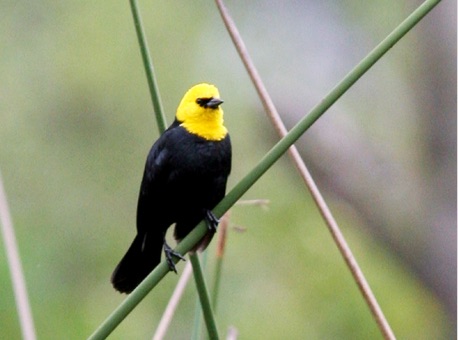 Chrysomus icterocephalus bogotensis – Monjita (La Conejera Wetland Foundation).
Chrysomus icterocephalus bogotensis – Monjita (La Conejera Wetland Foundation).
In this wetland 115 species of birds have been registered, two endemic species of the wetlands of the high Andean region of Colombia (Rallus semiplumbeus and Cistothorus apolinari) and three endemic subspecies (Oxyura jamaicensis andina, Porphyriops melanops bogotensis and Chrysomus icterocephalus bogotenslus). Some of these species are threatened and in danger of extinction. It is also home to species of forest birds equally endemic to the eastern Colombian mountain range, including Synallaxis subpudica. In the same way, in this ecosystem it is possible to observe boreal migratory species (Anas discors, Pandion haliaetus, Porzana carolina, Tringa solitario and Empidonax alnorum, among others).
Due to the priority bird species for conservation that this wetland has, it has been declared as an Important Bird and Biodiversity Area (IBA). (Galindo, 2015).
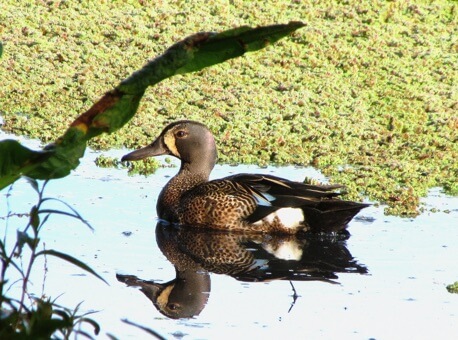 Anas discors – Canadian Duck (La Conejera Wetland Foundation).
Anas discors – Canadian Duck (La Conejera Wetland Foundation).
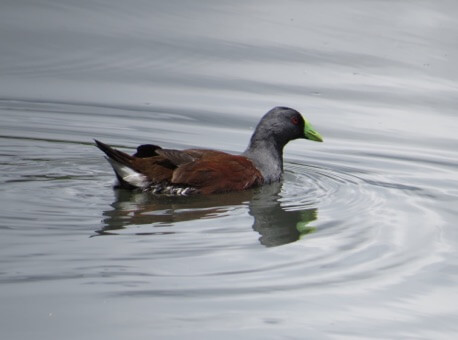 Porphyriops melanops bogotensis – Tingua Moteada (La Conejera Wetland Foundation).
Porphyriops melanops bogotensis – Tingua Moteada (La Conejera Wetland Foundation).
In addition, in this wetland it is found the Senecio carbonelli (Swamp Daisy), an endemic species that had been declared extinct globally, but which was once again found by the La Conejera Wetland Foundation in 1998 in this ecosystem.
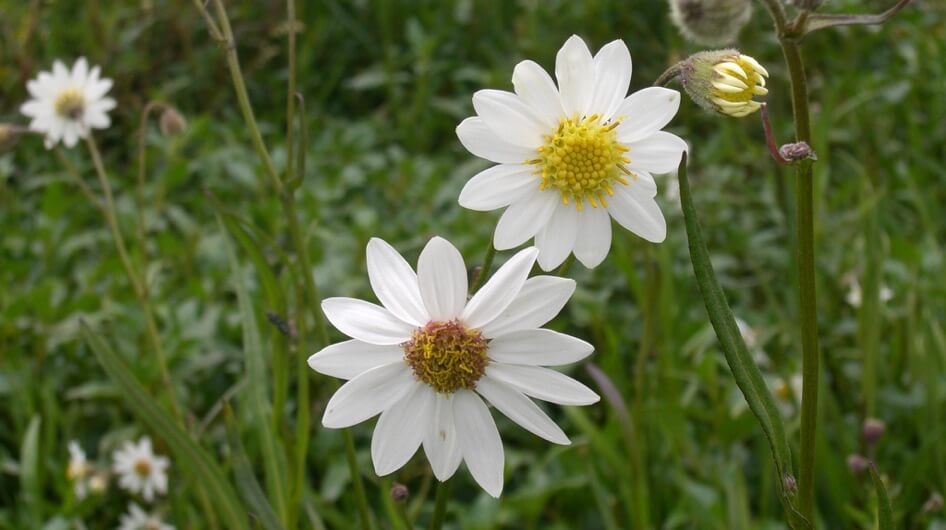 Senecio carbonelli – Swamp Daisy (Laura Galindo).
Senecio carbonelli – Swamp Daisy (Laura Galindo).
According to the Millennium Ecosystem Assessment (2005), this ecosystem provides different ecosystem services, including:
• Regulates hydrological flows (groundwater recharge and discharge).
• Purifies water and treats waste (retention recovery and elimination of excess nutrients and other contaminants).
• Supports trophic chains.
• Regulates the climate through the capture of greenhouse gases. It influences precipitation, temperature, etc. at local and regional level.
• Controls flooding.
• Retains sediments and accumulates organic matter.
• To be a habitat for wildlife, which allows it to have a unique biological diversity, with endemic species as "indicators" of the state and quality of the ecosystem.
• Provides important aesthetic, educational, cultural and spiritual benefits, as well as a wide range of opportunities for recreation and nature tourism.
GLOSSARY
Colombian Academy of Exact, Physical and Natural Sciences [ACCEFYN]. 2011. Support for the declaration on the Northern Regional Forest Reserve “RFRN” of Bogotá. Bogotá, D.C.
Environmental commitment for Bogotá. 2019. Retrieved on November 24, 2019, from https://amigosdelamontana.org/2019/09/invitacion-a-los-candidatos-y-candidatas-a-la-alcaldia-y-al-concejo-a-firmar-el-compromisoambientalporbogota/.
Regional Autonomous Corporation of Cundinamarca [CAR]. 2014. Environmental Management Plan of the Regional Producer Forest Reserve of the North of Bogotá “Thomas van der Hammen”. Environmental synthesis and diagnosis. Bogotá, D.C.
Regional Autonomous Corporation of Cundinamarca. 2019. Technical concept for the subtraction of the Regional Producer Forest Reserve of the North of Bogotá “Thomas Van der Hammen”, is negative: CAR Cundinamarca. Retrieved on November 25, 2019, from https://www.car.gov.co/saladeprensa/concepto-tecnico-para-la-sustraccion-de-la-reserva-forestal-productora-del-norte-de-bogota-thomas-van-der-hammen-es-negativo-car-cundinamarca.
Decree 190 of 2004. Through which the provisions contained in District Decrees 619 of 2000 and 469 of 2003 are compiled. Administrative Department of District Planning. Mayor's Office of Bogotá D.C.
Evaluation of the Millennium Ecosystems. 2005. Ecosystems and Human Welfare: Wetlands and Water. Synthesis Report World Resources Institute, Washington, D.C. Copyright © 2005 World Resources Institute.
Galindo, L. 2015. Ecological recovery of the wetland La Conejera, Bogotá D.C., Colombia. Unpublished master's thesis. University of Alcalá, Alcalá de Henares, Spain.
Institute of Environmental Studies [IDEA]. 2018. Bogotá and the Thomas van der Hammen Reserve. Contributions from the Ecological Economy. Bogotá, D.C.
López, C. & Program Team. 2019. Claudia Mayor 2020 - 2024 government program. Bogotá, D.C., Colombia.
BIBLIOGRAPHY
Colombian Academy of Exact, Physical and Natural Sciences [ACCEFYN]. 2011. Support for the declaration on the Northern Regional Forest Reserve “RFRN” of Bogotá. Bogotá, D.C.
Environmental commitment for Bogotá. 2019. Retrieved on November 24, 2019, from https://amigosdelamontana.org/2019/09/invitacion-a-los-candidatos-y-candidatas-a-la-alcaldia-y-al-concejo-a-firmar-el-compromisoambientalporbogota/.
Regional Autonomous Corporation of Cundinamarca [CAR]. 2014. Environmental Management Plan of the Regional Producer Forest Reserve of the North of Bogotá “Thomas van der Hammen”. Environmental synthesis and diagnosis. Bogotá, D.C.
Regional Autonomous Corporation of Cundinamarca. 2019. Technical concept for the subtraction of the Regional Producer Forest Reserve of the North of Bogotá “Thomas Van der Hammen”, is negative: CAR Cundinamarca. Retrieved on November 25, 2019, from https://www.car.gov.co/saladeprensa/concepto-tecnico-para-la-sustraccion-de-la-reserva-forestal-productora-del-norte-de-bogota-thomas-van-der-hammen-es-negativo-car-cundinamarca.
Decree 190 of 2004. Through which the provisions contained in District Decrees 619 of 2000 and 469 of 2003 are compiled. Administrative Department of District Planning. Mayor's Office of Bogotá D.C.
Evaluation of the Millennium Ecosystems. 2005. Ecosystems and Human Welfare: Wetlands and Water. Synthesis Report World Resources Institute, Washington, D.C. Copyright © 2005 World Resources Institute.
Galindo, L. 2015. Ecological recovery of the wetland La Conejera, Bogotá D.C., Colombia. Unpublished master's thesis. University of Alcalá, Alcalá de Henares, Spain.
Institute of Environmental Studies [IDEA]. 2018. Bogotá and the Thomas van der Hammen Reserve. Contributions from the Ecological Economy. Bogotá, D.C.
López, C. & Program Team. 2019. Claudia Mayor 2020 - 2024 government program. Bogotá, D.C., Colombia.


